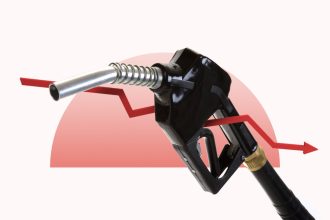Key takeaways
- Required minimum distributions refer to the amount of money that some retirement account holders are required by the IRS to withdraw starting at age 73.
- Some retirement accounts, such as Roth accounts, are not subject to this rule.
- If you fail to start taking RMDs from an account that requires them in time, you could be subject to a 25 percent penalty.
A required minimum distribution, or RMD, is the amount of money that the IRS requires you to withdraw annually from certain retirement plans the year after you turn 73 years old.
After decades of contributing to your retirement plan, you might be approaching the time to start taking money out of it. Some retirement accounts have required minimum distributions, including:
- Employer-sponsored retirement plans, such as traditional 401(k), traditional 403(b) and 457(b) plans
- Traditional IRA
- SEP IRA
- SIMPLE IRA
- Other defined contribution plans
The IRS requires that account holders of some retirement plans start taking required minimum distributions when they reach a specific age. In 2023, the age rose from 72 years to 73, as part of the SECURE Act 2.0. In 2033, the minimum age for RMDs jumps again to 75 years old.
If you inherit a retirement account, including Roth accounts, you’ll also need to take the required minimum distributions.
If you don’t take a required minimum distribution, then the IRS will hit you with a stiff penalty (more below).
How required minimum distributions work
With many retirement accounts, you contribute on a tax-deferred (or pre-tax) basis and your money grows tax-deferred for as long as you have it. But when you hit 73, you’ll need to start taking money out of your account each year. Those distributions are deemed taxable income.
Your first RMD is calculated by how much you have in your tax-deferred retirement account at the end of the year before turning 73. Each subsequent year, an RMD is calculated by dividing the year-end account value by the account owner’s life expectancy factor based on mortality rate tables.
Remember these are minimum distributions. You can always take out more if you need it. Additionally, you can set up automatic withdrawals — whether in one lump sum, quarterly, or at any other point during the year — as long as you take out at least the minimum amount over the course of the year.
When do required minimum distributions not apply?
Not all retirement accounts have RMDs. Roth IRAs, Roth 401(k) plans and Roth 403(b) plans don’t require minimum distributions.
If you have a Roth IRA, you can continue making contributions so long as you have earned income and meet any of the usual conditions for doing so.
You may also be able to avoid an RMD on a traditional 401(k) or 403(b) in some cases. If you’re still working for the employer who sponsors the plan, then you can typically skip RMDs on that plan. However, if you have other 401(k) plans from former employers, you’ll still need to take distributions from them. This exception does not apply to traditional IRAs, so you’ll still need to take RMDs from them.
How to calculate a required minimum distribution
The required minimum distribution is calculated by taking the account balance as of Dec. 31 of the previous year and dividing it by a life expectancy factor from the IRS. The life expectancy factor depends on how many beneficiaries you have as well as their ages. Use the IRS worksheet and appendices to calculate your figures. The IRS makes updates often, so check the site for new developments.
You’ll be able to find the account balance on the year-end statement sent by your financial institution, and you’re required to report the amount of the RMD to the IRS, along with the date you’ll first take the distribution.
There’s no RMD for accounts where the owner died on or before the required beginning date. However, if an account owner passes away and has already begun taking RMDs, then heirs will need to be sure that the account disburses the RMD for that year, or risk paying substantial penalties.
How required minimum distributions are taxed
In general, required minimum distributions are taxed at ordinary income rates. If your contributions to the retirement account were tax-deductible when you made them, then you’ll be taxed on the distributions.
Roth IRAs do not have RMDs as long as the original account owner is still alive. Rules vary for inherited IRAs, but those distributions are tax-free as long as certain conditions are met, such as the five-year rule.
Required minimum distribution example
You turn 73 years old this year and your partner turns 70. Using the tables provided by the IRS, your life expectancy factor is 26.5. (You use Table III (Uniform Lifetime) in cases where the account holder is unmarried, the spouse is not more than 10 years younger or the spouse is not the sole beneficiary of the holder’s IRA.)
Say you have $500,000 as of Dec. 31 of last year. Take $500,000 and divide by 26.5. Your required minimum distribution this year is $18,868.
What happens if you don’t take a required minimum distribution?
If you don’t take a required minimum distribution, you could get charged a 25 percent tax penalty on the amount that should’ve been distributed. However, if you correct the issue within two years, you may be able to reduce the penalty to just 10 percent. (Previously, the penalty was a 50 percent penalty, but SECURE Act 2.0 lowered the assessments.)
Say you took out only $15,000 of the $18,868 in the example above. You’d be penalized 25 percent on the remaining $3,868, so you’d owe $967 in taxes to the IRS for missing the RMD if it took you longer than two years to correct the issue. If you corrected the deficiency in less than two years, you might owe just $387.
Take the time to review IRS publications and documents to make sure you’re reporting the most accurate information. If you take out less than you need to, it could cost you.
The less you have in your retirement account, the lower your RMD will be. But remember that money has to stretch for your entire retirement so the more you have in the account, the more financially comfortable you’ll be in retirement.
— Bankrate’s Brian Baker contributed to an update of this story.
Why we ask for feedback
Your feedback helps us improve our content and services. It takes less than a minute to
complete.
Your responses are anonymous and will only be used for improving our website.
Help us improve our content
Read the full article here














